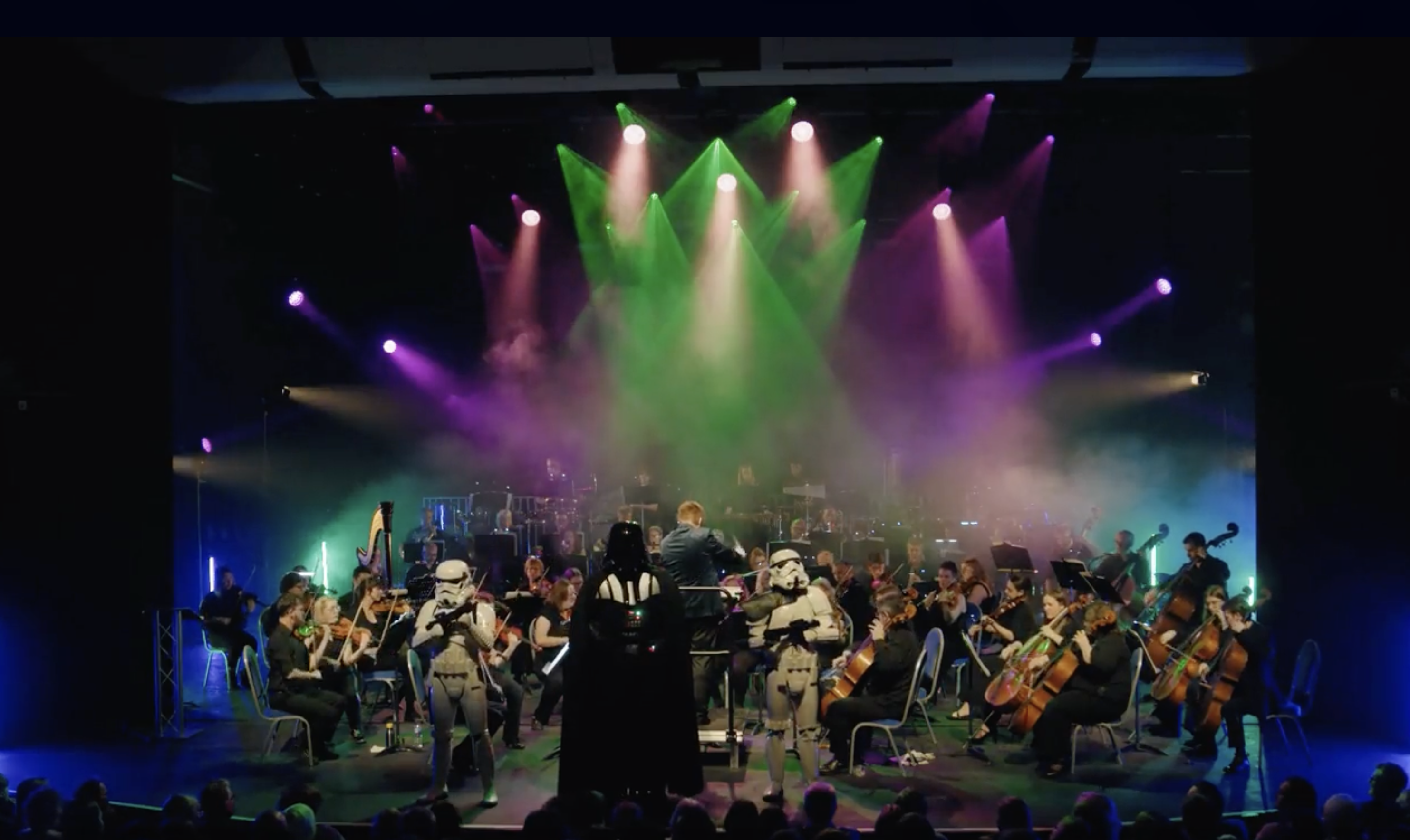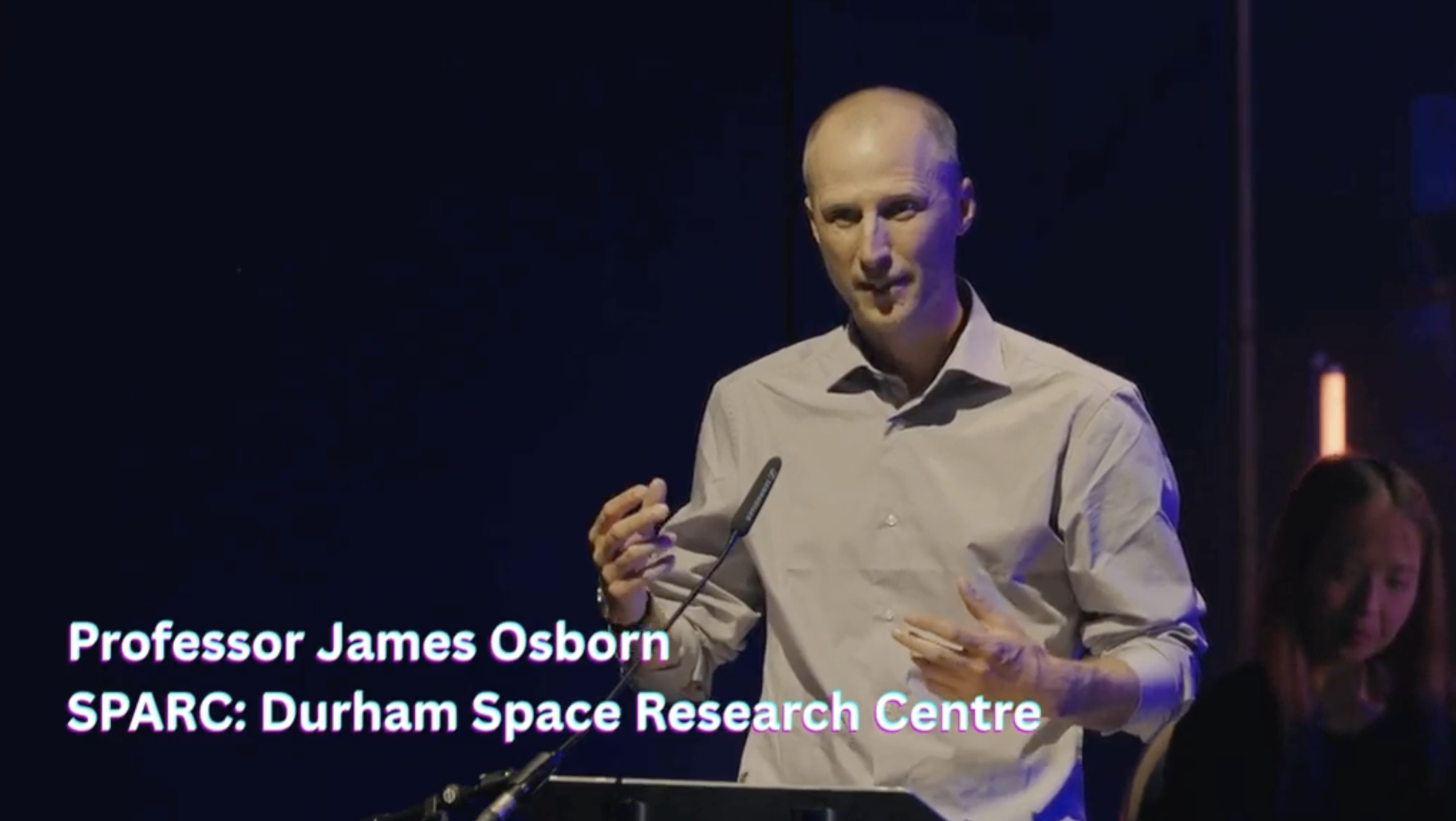Hollywood in Space
A Celebration of Science Fiction music.
Organised by Ged Matthews and the LIGHT YEARS project and in collaboration with the NE Film Orchestra, we were treated to a full orchestra rendition of many sci-fi favourites.
Prof Osborn gave a short performance on how science fiction can influence and motivate space scientists. See a partial transcript below. Prof Osborn came on stage just after the Star Wars theme, and just before the stage was invaded by Darth Vader and his storm troopers. Amazing.
The other reading was by Isabelle Crossley, Durham PhD student and legitimate rocket scientist talking about Apollo 13 and the actions taken by NASA.
Keep an eye out for more cool space related activities landing in the North East soon.
Light Years is a 3-year programme of dynamic art-science collaborations that celebrates the 1,200 year history of space science in County Durham, shines a spotlight on worldclass research and innovation in next generation spacetech, and invites the public to explore the really big questions of the universe.
Durham University Space Research Centre (SPARC)
---
“When I was a kid, I didn’t dream of becoming a scientist because of equations, or textbooks. I dreamt because of starships and alien worlds. Because of stories.
I still remember watching Star Wars for the first time at my grandad’s house. That night, stars stopped being just points of light - they became destinations, abstract physics became real. For me, science fiction makes the cosmos feel tangible.
These stories didn’t give me answers - they gave me curiosity. And that curiosity is at the heart of science.
If you hold a grain of sand at arm’s length, it covers about 10,000 galaxies, and each galaxy contains over 100 billion stars. There are more stars in the observable universe than grains of sand on every beach on Earth. Most stars are thought to host planetary systems, and many of those planets lie within the habitable zone, where conditions might allow liquid water, and hence life as we know it, to exist.
But we now know that Moons such as Europa and Enceladus, may conceal vast oceans beneath their icy crusts, kept warm by tidal forces. These alien oceans could offer entirely different environments where life might arise.
If life can emerge in the unlikeliest corners of the cosmos, then the universe isn’t just vast - it’s alive with possibility.
So, to every young dreamer out there: keep asking “what if?” Because the future of science fact might begin with your favourite science fiction story.”





/prod01/prodbucket01/media/durham-university/departments-/physics/cfai/CfAI-Webpage-Banner-smaller.jpg)